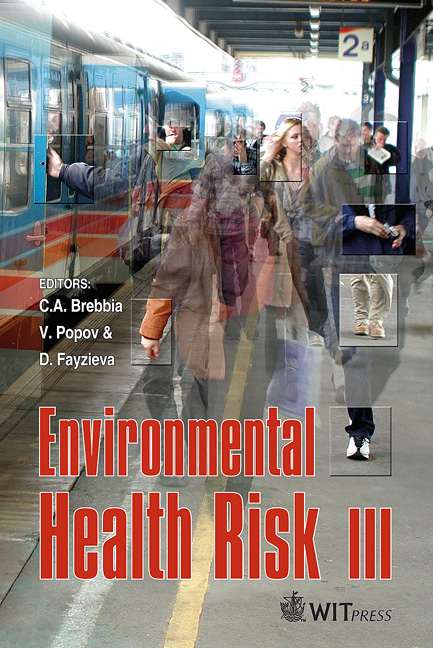The Use Of TPH Analytical Data To Estimate Human Health Risk: Practical Approaches
Price
Free (open access)
Transaction
Volume
9
Pages
10
Published
2005
Size
322 kb
Paper DOI
10.2495/EHR050101
Copyright
WIT Press
Author(s)
B. Sarmiento, T. Goyanes, I. Coleto & N. De las Casas
Abstract
This paper describes the three basic approaches that have been used to estimate potential human health risks posed by TPH contamination: the indicator approach, the surrogate approach and a mixed version. Differences among methods are discussed in a case study: a former industrial area impacted with petroleum products, destined to be redeveloped for recreational use. Three exposure pathways have been considered: hydrocarbon vapor inhalation, ingestion and dermal contact. Firstly, only \“indicator compounds” were evaluated. Next, the product was considered as gasoline in the Quantitative Risk Assessment. Afterwards, simple fractionation of hydrocarbon chains was introduced as the input parameter. Finally, the fractionation between the aromatic and aliphatic terms of each group of hydrocarbons was considered. Site-Specific Target Levels (SSTLs) for each pathway were calculated. Results for different hypothesis have been evaluated from a technical and economic point of view. Cases in which input concentration for a compound was above soil saturation limit are also discussed. Keywords: hydrocarbon, TPH, human health, indicator, whole product, TPH fraction, soil saturation, SSTL. 1 Introduction Contamination of soils and groundwater by petroleum products can pose a risk to human health and environmental receptors. Petroleum products are complex mixtures containing primarily hydrocarbons. The toxicological evaluation of petroleum hydrocarbons is particularly difficult because these substances are present in the environment containing many hundreds of individual compounds, each with their own toxicological properties and environmental behavior. In
Keywords
hydrocarbon, TPH, human health, indicator, whole product, TPH fraction, soil saturation, SSTL.





